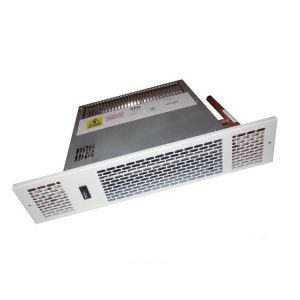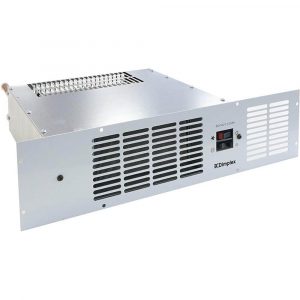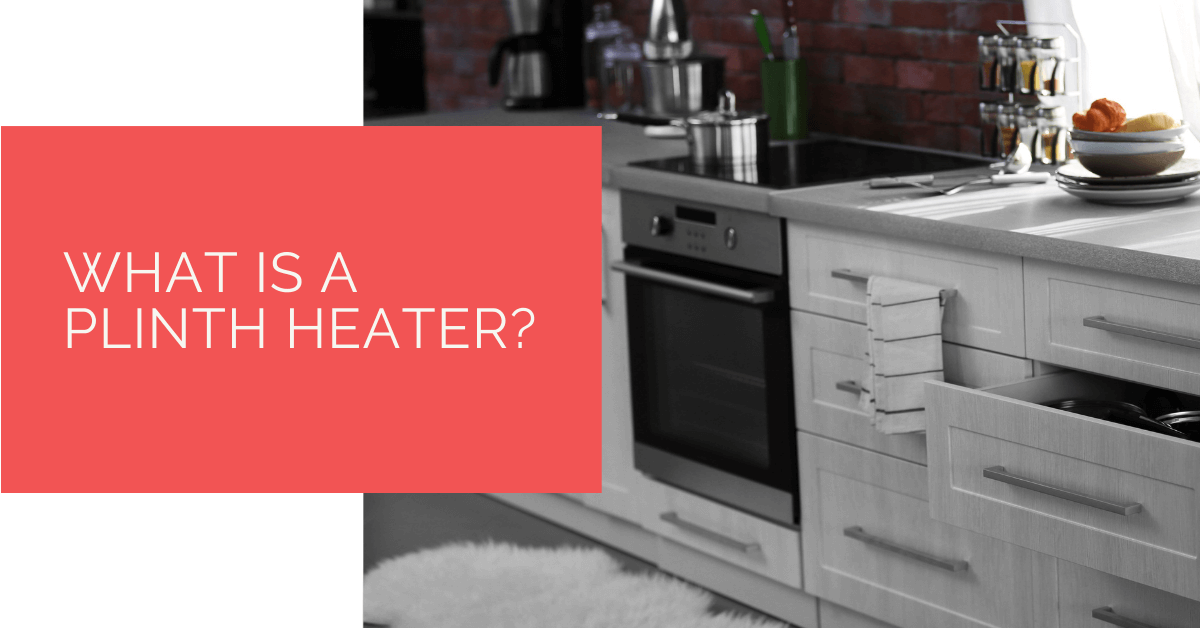A plinth heater is a compact, letterbox-shaped heater that fits perfectly under the kitchen or utility counters. They’re made for people who don’t have enough wall space for a large radiator and want to maximise their kitchen area without compromising heat.
They function because of their huge surface area, which is in the form of a grill. With the help of an optional fan, they can swiftly and efficiently deliver a large load of heat directly into your room.
Contents
- 1 Key Takeaways
- 2 What Do Plinth Heaters Look Like?
- 3 Varieties of Plinth Heater
- 4 Where to Install Plinth Heaters?
- 5 Is It Expensive to Run Plinth Heaters?
- 6 Is It True that Plinth Heaters Make a Lot of Noise?
- 7 How to Set up Plinth Heaters?
- 8 Installing a Hydronic Plinth Heater
- 9 Heat Pump Source: Reliable Heating and Cooling Solutions
- 10 In conclusion
Key Takeaways
- Plinth heaters are compact, efficient heaters designed to fit under kitchen or utility counters, providing a space-saving heating solution.
- These heaters come in electric and hydronic variants, with electric models being more expensive to run but offering convenience.
- Plinth heaters typically produce a noise level similar to a fan oven or refrigerator. They can be installed in various locations, but careful installation is necessary for optimal performance.
What Do Plinth Heaters Look Like?
The appearance of a plinth heater is determined by whether it is installed or is still in the box. The heat exchanger, fan, and electrical components are all housed in the main metal chassis. This portion of the kitchen is hidden behind or beneath the cabinets.
The air intake and outlet slots, and the switch are located on the front grille, which is the most visible section after installation. This grille is available in two finishes: powder-coated and brushed stainless steel colour.
Varieties of Plinth Heater
Plinth heaters vary as per the source of the actual heating component.
 A copper-aluminium heat exchanger in the hydronic heaters transfers heat from the central heating system. It’s a radiator with a fan, similar to your car heater. The heater is connected to the central heating pipes, which the electric fan blows over, warming the air before blowing it into the room.
A copper-aluminium heat exchanger in the hydronic heaters transfers heat from the central heating system. It’s a radiator with a fan, similar to your car heater. The heater is connected to the central heating pipes, which the electric fan blows over, warming the air before blowing it into the room.
The only electric variants are electric fan heaters installed on a plinth. To meet Lot 20 standards, solitary electric models shall now only come with a thermostat and a setback timer.
And all heaters will be required to include intelligent room temperature controls to save wasted energy.
Lastly, all wireless electric plinth heaters include a setback timer and a wall-mounted wireless thermostat.
Where to Install Plinth Heaters?
Plinth heaters, as the name suggests, are typically put into the plinth underneath your kitchen units. However, they can also be installed in restaurants, shops, movie halls, offices, and workshops. Besides this, they can also be placed under stairwells, in the bases of beds, and the bottoms of wardrobes.
In terms of bathrooms and rooms with excessive humidity, installation of such heaters should be avoided unless approved by your electrician. There are low-voltage DC models of these that can be securely used in restrooms.
Is It Expensive to Run Plinth Heaters?
The answer to this question is dependent on the sort of plinth heater you purchase. Electric plinth heaters are typically more expensive to run than hydronic heaters because they have their power supply. Since, electricity has a higher cost per kilowatt than gas, running a heater using electricity is usually more expensive.
Additionally, as most homes already have a gas boiler and radiator system in place, the cost of operating a hydronic plinth heater will be minimal. However, some models come with an electric fan to help distribute the heat, which adds a modest additional running cost when it’s turned on.
Is It True that Plinth Heaters Make a Lot of Noise?
The noise level of plinth heaters is a frequently asked subject. The noise being referred to is the noise created by the internal fan, which aids in the circulation of heat around the room.
However, the amount of noise plinth heaters usually make shouldn’t be a cause for concern.
Many users have compared the noise level to that of a fan oven or refrigerator in operation, which shouldn’t be too irritating. In fact, with a hydronic plinth heater, you don’t have to have the fan going all the time, thereby reducing noise pollution significantly.
How to Set up Plinth Heaters?
Although connecting a plinth heater to your central heating system does not pose a difficult task, it does necessitate technical and plumbing expertise.
 First of all, the installer will drain and take out the previously existing radiator from the wall. The pipe then will have to be trimmed back or expanded as needed to accommodate the new arrangement.
First of all, the installer will drain and take out the previously existing radiator from the wall. The pipe then will have to be trimmed back or expanded as needed to accommodate the new arrangement.
The next step is to put a pair of isolation valves on the pipes, which allows the centralized heating system to be replenished and restarted while the kitchen cabinets are being installed.
The flexible hoses that are supplied can be fitted to facilitate a convenient connection to the plinth heater on the second fixture.
The ultimate step in the preliminary fix is to make sure you have a power-supply source within two metres of the heater’s final placement so you can connect it to the fused spur.
The units may now be placed, and the heater’s plinth can now be cut out. The isolation valves need to be opened, and the two flexible hoses have to be connected. Thereafter, the installation will be complete, and the contractor will test the centralized heating system for leaks and modify the isolation of the local radiator valves as needed to strike a balance in the flow and return rate.
Installing a Hydronic Plinth Heater
To properly install a plinth heater, make sure you follow all of the directions in the product manual.
In most circumstances, installing a plinth heater is not an easy do-it-yourself project but often requires a qualified plumber to deal with the fan’s pipe and electric connections.
Steps to Install a Hydronic Plinth Heater
Make a hole in the plinth. This will be beneath the doors, at the bottom of your kitchen counters. There will normally be some clearance area surrounding the heater to allow for ventilation. It needs to be set up on a level and stable surface.
Place the isolating valves in place. This may or may not be included with your heater. The flexible hose pipes from the heater must then be linked to the central heating system.
Connect the power lines and isolate the power supply from the rest of the house. Plinth heaters are considered fixed appliances and should be powered by a double pole 3A fused spur with a contact gap of at least 3mm.
Next, place the heater in the desired location and make sure there are no kinked or snagged cables or hoses. Lastly, fix the base to the plinth.
Screws can now be used to secure the grill to the plinth. To finish the setup, follow the manufacturer’s instructions and remember to make any necessary adjustments to the heater now that it’s in position.
Heat Pump Source: Reliable Heating and Cooling Solutions
At Heat Pump Source, we take pride in our unwavering commitment to serving the UK with top-tier HVAC solutions. From the efficiency of heat pumps and the cool relief of air conditioning to the warmth of boilers, radiators, and underfloor heating, our dedicated team is always at the forefront of innovation. We understand the unique needs of every household and business, and we strive to provide dependable health and cooling products and services that are tailored just for you. Ensuring your comfort and satisfaction is our utmost priority. Whether you have questions, need guidance, or require support, we’re always here to assist. Please don’t hesitate to contact us; we’re eager to be of service.
In conclusion
Installing plinth heating units has various advantages. They can be an excellent way to provide additional heating to a room. They are typically unobtrusive, and nowadays, the majority of them are designed so that they appear very aesthetic.
They’re ideal for use in places where space is restricted or when you don’t want additional portable heating.
About the Author
At Heat Pump Source, our articles are the product of a collaborative effort among a team of highly skilled HVAC experts. Our dedicated professionals, hailing from diverse backgrounds in heating, ventilation, air conditioning, and refrigeration, contribute their extensive knowledge and experience to every piece of content. This multidisciplinary approach ensures comprehensive coverage. Our commitment is to deliver authoritative, reliable, and tailored advice to meet the unique needs of every household and business across the UK.

